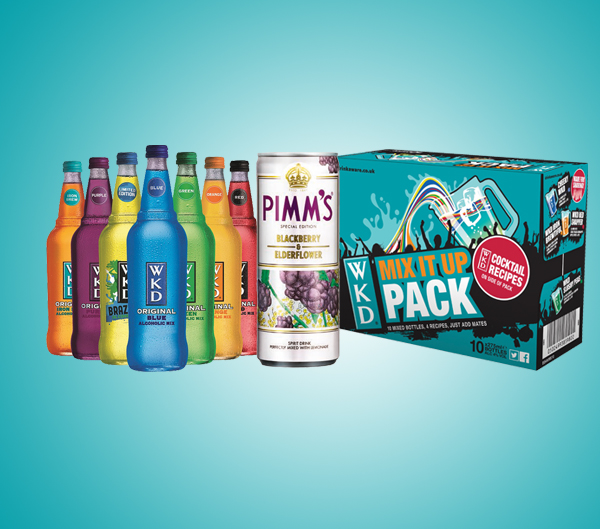Last year ended with a defeat in the courts for Imperial Tobacco, which will lead to stores in Scotland over 3,000 sq ft banned from displaying tobacco products from April. With a two year window for smaller stores, is there an advantage?
by Kevin Scott
The new year has begun under the shadow of one of the biggest shifts in retail in recent memory. From April, stores with over 3,000 sq ft of sales space will no longer be able to display tobacco products. The ban should have been enforced in April 2012, but a legal challenge from Imperial Tobacco held up proceedings, although the December ruling sees Scotland fall into line with other parts of the UK. The major difference is that Scottish retailers will have a smaller area in which they are allowed to display tobacco while making a sale.
With smaller stores set to follow in April 2015, the Scottish convenience industry has reacted angrily to the fact that the display ban will be coming into force at all. John Drummond, Chief Executive of the SGF, added: “It is the retailers who are the real losers in this case; losers because they will have to find large sums of money in order to cover up the tobacco gantries that are currently in place. Scottish retailers are worse affected than the other countries in the UK due to the draconian measures imposed by the Scottish Government especially in relation to the available space allowed during any transaction. The probability of longer transaction times resulting in longer queues and disgruntled consumers may lead them to pursue cheaper purchases on the illicit market, where it may be easier to buy tobacco products which have either been imported illegally or are counterfeit products.”
Kate Salmon, SWA Executive Director, says: “In our view, this implementation date does not represent a ‘fair timescale’ as stated by Minister for Public Health Michael Matheson. It is less than four months away and we are concerned that this does not leave enough time for stores to make the necessary changes to comply with the law. The threat of prosecutions looming in the coming months is bad for business.”
The unknown opportunity
What must be remembered is that there is a two year window where it could be argued that convenience stores have a distinct advantage – shoppers can continue to browse the gantry with their eyes, while transactions times in larger stores will undoubtedly increase as a result of opening and closing shutters and blinds and indentifying where products are – especially niche brands that don’t have a dozen facings down the nearest Tesco.
Last year, on the eve of the English ban coming into force, claims were made that convenience retailers stood to bring in an extra £1bn in revenue before going dark themselves. It is still too soon to know just how big the opportunity is, but small stores, by getting their tobacco offering spot on, can now offer something supermarkets cannot, and that’s not something that happens often.
In fact, research carried out by Imperial Tobacco suggests that availability is the single most important factor for tobacco shoppers – and if you can’t see if your chosen product is available, why would you wait in a supermarket queue?
For small stores, the message is simple: “Availability of their preferred brand is consistently the number one consideration for tobacco shoppers and retailers must ensure their offering is constantly available or they run the risk of walk outs,” says Stephen Horne, Imperial Tobacco Regional Sales Manager for Scotland. “Over 50% of adult smokers will leave a store without making a purchase if their preferred tobacco brand is out of stock so finding ways to maximise availability is of paramount importance,” he adds.
Horne says that independent retailers in Scotland can positively react to the impending restrictions. “Demonstrating best practise in terms of availability means stock on the shelves, not hidden away in the store room,” he says. “Having an effective stock replenishment system and planning when to re-stock the shelves is also key to maintaining excellent availability. If you go out of stock during peak periods and then have to re-stock the shelves, not only will the task be difficult for staff but you will risk alienating your customers.”
The view from down south
In England, the display ban has been in force since April 2012 and although both suppliers and retailers say that it is too early to provide figures, anecdotal evidence would suggest that there has been a shift towards smaller stores.
Alan Graham, Head of Marketing at STG UK, mentions one nationwide chain of convenience stores that had two stores in the same small town in England – one over 3,000 sq ft and one under. When the market went dark, sales of tobacco went up 25% in the smaller shop. “So, when Scotland does go dark in 2013, there will be a limited window of opportunity. That means it’s more important than ever for retailers to ensure they are consistently ensuring they’re ranging and merchandising is spot on,” he says.
Supermarket levy
As a side note to all this, it is worth considering the role of the Supermarket Levy in all this. Since the summer Sainsbury’s has withdrawn tobacco entirely from a number of its larger stores in Scotland so as to avoid the levy, which is applicable on stores with a rateable value of over £300,000. By not selling tobacco, the company avoids the levy. For small retailers nearby large supermarket that undertake such a practice, there is bound to be a knock-on effect that will increase revenues of not just tobacco, but other categories.
It may have only just begun, but 2013 is set to be a riveting year.
The three key factors to ensure success
1. Best practice inventory management
2. Merchandising – have a clean, tidy gantry with clear prices
3. Customer service – ensure staff are friendly and informative







